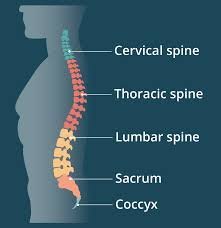Non-Specific Low Back Pain: Causes, Treatment, and Prevention
Non-specific low back pain can be a real nuisance, affecting your daily activities and overall quality of life. The causes can vary from poor posture to muscle imbalances or even stress. However, the good news is that there are effective treatments available like physical therapy, gentle exercises, and even acupuncture.

Introduction
Non-specific low back pain (NSLBP) is a common condition that affects millions worldwide. Unlike specific back pain, which has an identifiable cause such as a herniated disc or spinal stenosis, NSLBP Non-specific low back pain has no clear structural origin. It often results from lifestyle factors, posture issues, or muscular strain. In this article, we will explore the causes, symptoms, diagnosis, treatment options, and prevention strategies for non-specific low back pain.
What is Non-Specific Low Back Pain?
Non-specific low back pain refers to discomfort in the lower back that does not have an identifiable pathology such as infection, tumor, or fracture. It is often categorized as acute (lasting less than six weeks), subacute (lasting 6–12 weeks), or chronic (persisting for more than 12 weeks).
Causes of Non-Specific Low Back Pain
While there is no single cause, various factors contribute to NSLBP, including:
1. Poor Posture
-
Sitting for prolonged periods in an incorrect posture puts strain on the lower back muscles.
-
Slouching while working on a computer or using mobile devices contributes to muscle imbalance.
2. Sedentary Lifestyle
-
Lack of physical activity weakens the core and back muscles, making them more susceptible to pain.
-
Excess weight can add pressure to the spine, leading to discomfort.
3. Muscle Strain or Overuse
-
Lifting heavy objects incorrectly can strain the lower back muscles.
-
Sudden movements or repetitive activities may cause microtears in muscle fibers.
4. Stress and Psychological Factors
-
Anxiety and stress can lead to muscle tension, particularly in the lower back.
-
Depression is often associated with chronic pain conditions.
5. Sleep Position and Mattress Quality
-
Sleeping on an unsupportive mattress can misalign the spine and increase back pain.
-
Poor sleep posture can also contribute to discomfort.
Symptoms of Non-Specific Low Back Pain
The primary symptom of NSLBP is pain in the lower back region. Other associated symptoms include:
-
Stiffness and reduced flexibility.
-
Pain that worsens with prolonged sitting or standing.
-
Occasional radiating pain to the buttocks or thighs.
-
Muscle spasms and tenderness.
Diagnosis of Non-Specific Low Back Pain
NSLBP is primarily diagnosed through clinical assessment. A healthcare provider may:
-
Take a detailed medical history to understand symptoms and lifestyle factors.
-
Perform a physical examination to assess posture, muscle strength, and flexibility.
-
Use imaging tests such as X-rays or MRI only if specific conditions (like fractures or herniated discs) are suspected.
Treatment Options for Non-Specific Low Back Pain
Management of NSLBP involves a combination of self-care, physical therapy, and medical interventions.
1. Lifestyle Modifications
-
Exercise and Stretching: Engaging in regular low-impact exercises such as walking, swimming, or yoga helps strengthen back muscles.
-
Proper Ergonomics: Maintaining correct posture while sitting and working can reduce strain on the lower back.
-
Weight Management: Maintaining a healthy weight minimizes pressure on the spine.
2. Pain Management Strategies
-
Over-the-Counter Medications: Nonsteroidal anti-inflammatory drugs (NSAIDs) such as ibuprofen can help relieve pain and inflammation.
-
Heat and Cold Therapy: Applying heat or ice packs to the affected area can provide temporary relief.
-
Massage Therapy: Helps improve circulation and reduce muscle tension.
3. Physical Therapy
-
Strengthening Exercises: Targeted exercises help improve core stability and reduce back pain.
-
Manual Therapy: Techniques like spinal manipulation by a chiropractor or physiotherapist may be beneficial.
-
Postural Training: Learning the right way to stand, sit, and lift objects can prevent further strain.
4. Alternative Therapies
-
Acupuncture: Some studies suggest acupuncture may help alleviate chronic low back pain.
-
Mindfulness and Meditation: Relaxation techniques can reduce stress-related muscle tension.
-
Chiropractic Care: Spinal adjustments may provide relief for some individuals.
5. Medical Interventions
-
Prescription Medications: Muscle relaxants or stronger pain relievers may be prescribed in severe cases.
-
Injections: Corticosteroid injections may be used to reduce inflammation.
-
Surgery: Rarely recommended for NSLBP unless an underlying structural issue is detected.
Prevention Strategies for Non-Specific Low Back Pain
While NSLBP is common, adopting healthy habits can reduce the risk of occurrence.
1. Maintain Good Posture
-
Sit with a straight back and keep your feet flat on the floor.
-
Use ergonomic furniture to support spinal alignment.
2. Stay Active
-
Incorporate regular stretching and strengthening exercises.
-
Engage in activities like swimming, walking, or yoga to promote flexibility.
3. Lift Objects Correctly
-
Use your legs rather than your back when lifting heavy items.
-
Avoid sudden twisting motions while carrying loads.
4. Manage Stress
-
Practice relaxation techniques such as deep breathing and meditation.
-
Engage in hobbies and activities that reduce mental stress.
5. Improve Sleep Habits
-
Choose a firm mattress that supports spinal alignment.
-
Avoid sleeping in positions that strain the back.
When to See a Doctor
While NSLBP often improves with self-care, medical attention is necessary if:
-
The pain persists for more than 12 weeks.
-
There is numbness, tingling, or weakness in the legs.
-
The pain is associated with fever, weight loss, or bladder/bowel dysfunction.
-
It results from a traumatic injury such as a fall or accident.
Conclusion
Non-specific low back pain is a prevalent condition that can affect daily life and productivity. Understanding its causes, symptoms, and treatment options empowers individuals to manage and prevent it effectively. By maintaining a healthy lifestyle, practicing good posture, and seeking appropriate care when needed, one can minimize the impact of NSLBP and enjoy a pain-free life. If your back pain persists, consult a healthcare professional for a personalized treatment plan.
What's Your Reaction?










